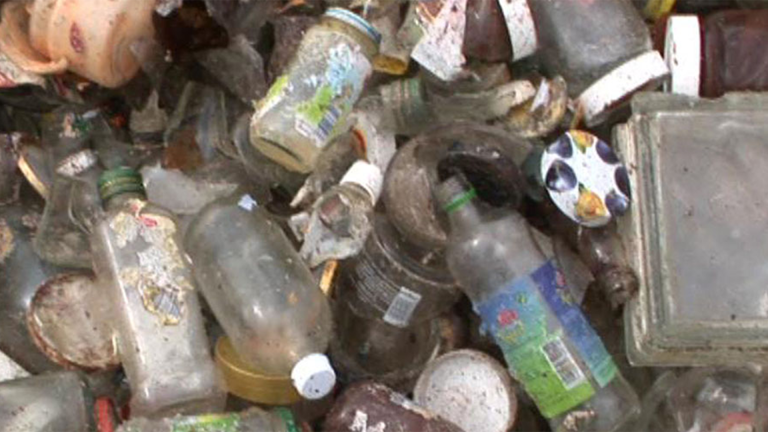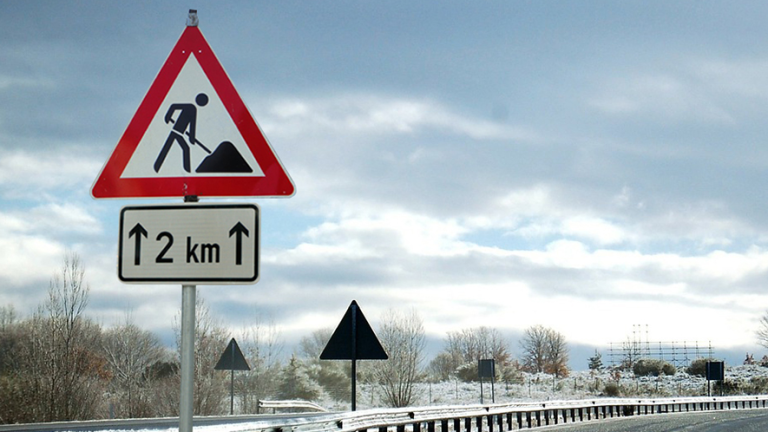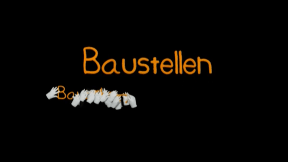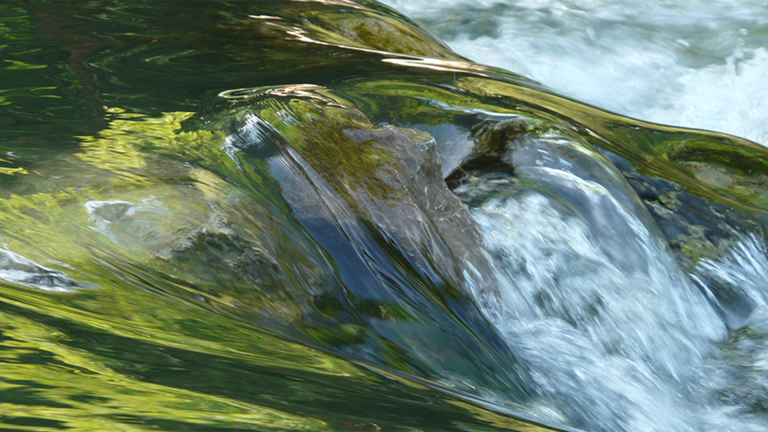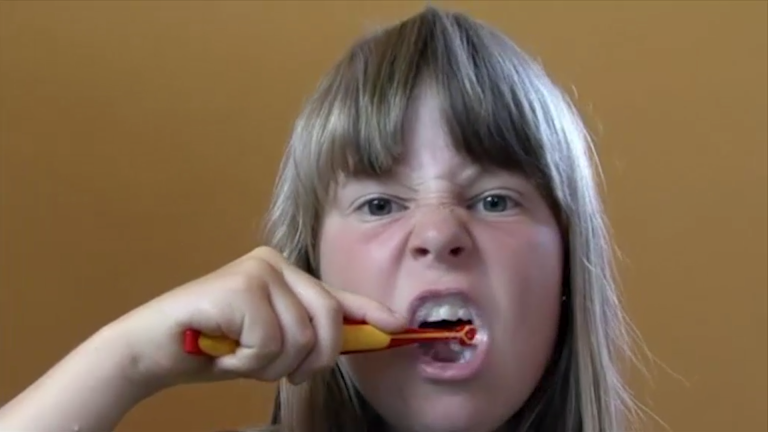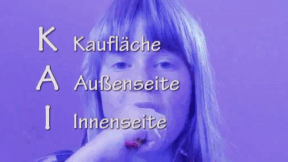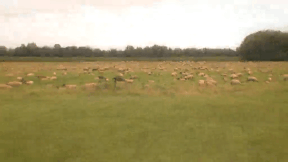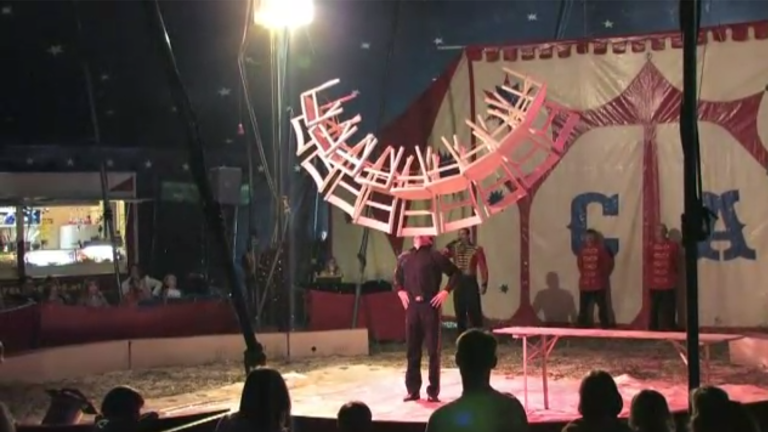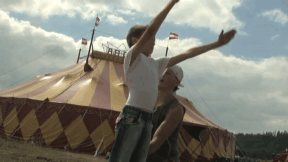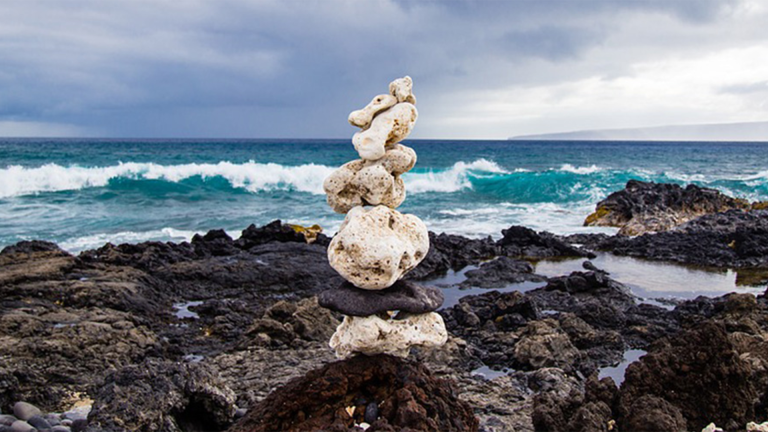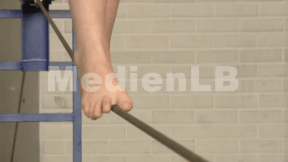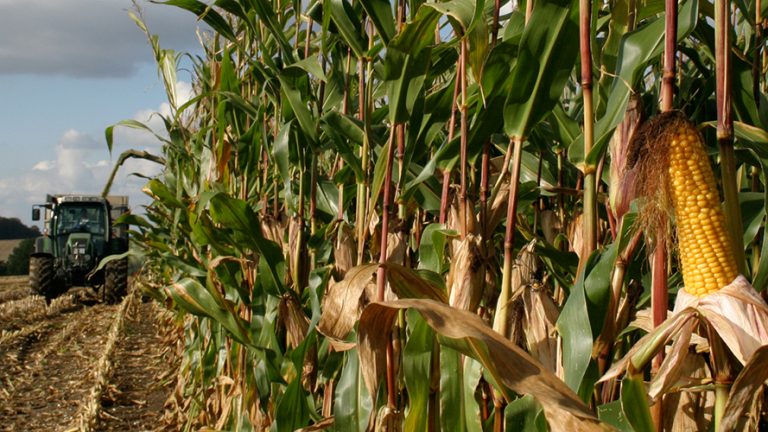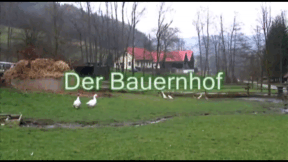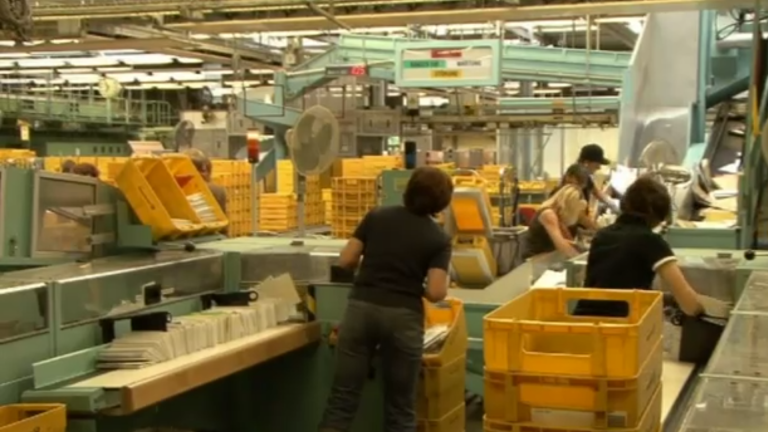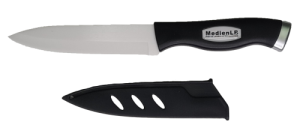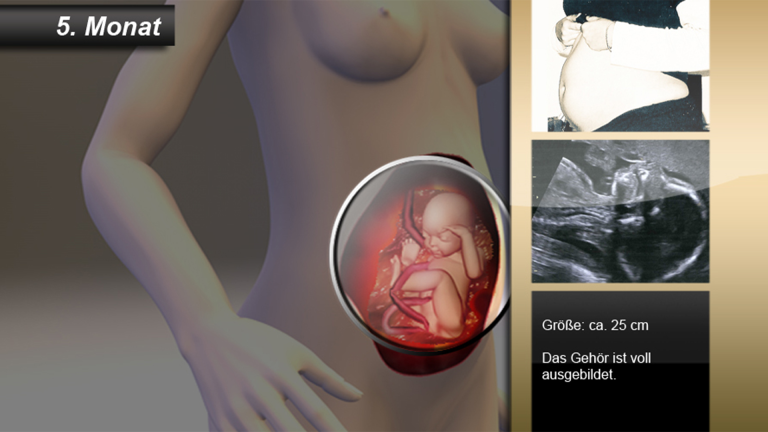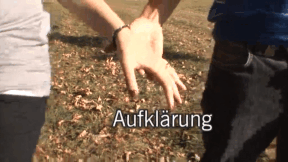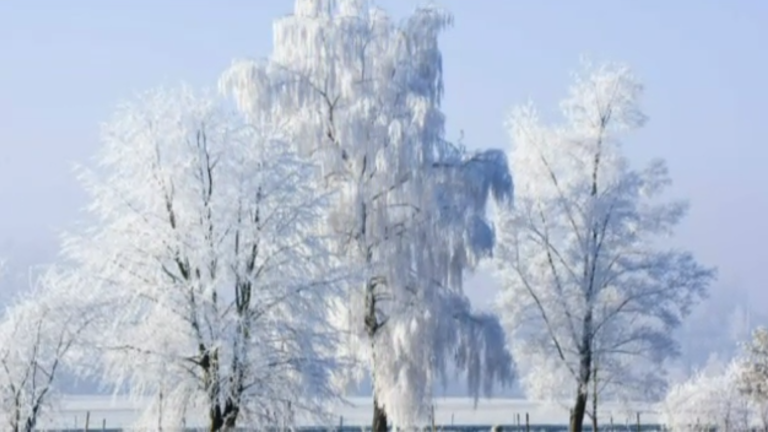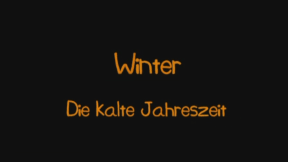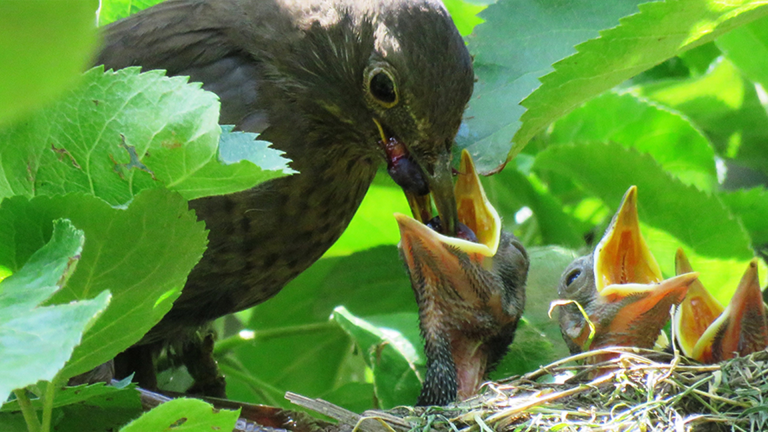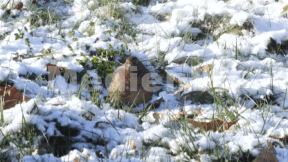Suche:
- # Artistry
- # Biology
- # Chemistry
- # Ecological
- # Economy
- # English
- # Foreign Language
- # Geography
- # German
- # Health
- # History
- # Informatik
- # Latin
- # Mathematics
- # Media Education
- # Music
- # Physics
- # Politics / Civics
- # Preschool
- # Primary School
- # Religion
- # Society
- # Sports
- # Technology
- # Training of Teachers
- # Vocational Education
From Stone to Glass
In terms understandable to children, this DVD illustrates how glass, a widely used material, is made. The film shows, step by step, the development from rock to quartz sand, which, mixed with further ingredients, forms an important component in the making of glass. In order to give the children an exact idea of glass production, a glassblower is watched at his job. The accompanying material contains extensive suggestions and recommendations, such as songs, experiments, tips for assembly, games, mandalas, etc., both for a practical application of the topic in the classroom and for reinforcing the knowledge the children have acquired. Special emphasis was laid on an integrated learning experience in kindergarten life for the children to experience the often used material glass with all their senses. Thus, this DVD offers a basis suitable for child-oriented projects in kindergarten and early primary school, which take up and illustrate a topic familiar from the children’s everyday lives.
Learn moreConstruction Sites
At a road construction site mostly the old road is removed with a big road miller. Sometimes a digger helps and carries the large parts away. They are loaded onto a truck. With the tar machine the road is newly tarred. Tar is a mixture of gravel, sand and crude oil. Here the tar is still very hot. When it cools down, it becomes very hard and the cars can drive on it. A new motorway or country road is created.
Learn moreWater
This DVD offers an insight into the correlation between life and water. In simple terms that are easily understandable to primary school pupils, the film outlines the significance of water for the lives of humans, animals and plants. The DVD covers the following aspects of the topic: Water is Everywhere (deposits and utilisation), Drinking Water (journey of the water, role of the waterworks, water consump- tion), Wastewater (water pollution, processes at a wastewater treatment plant, purification of wastewater), the Water Cycle in Nature (groundwater, evaporation, formation of clouds, rain, infiltration), States of Water (transition between the states, easy-to-perform experiments, occurrence in nature), Properties of Water (what water can do, percentage of water in animals and plants, water as nourishment). The film is divided into five menu items (chapters). Each chapter can be individually accessed and worked on.
Learn moreYour Teeth
This DVD demonstrates that a regular and thorough brushing of your teeth is the foremost condition for their lifelong health. At the same time, pupils learn that food that doesn‘t damage their teeth is decisive, too, in keeping them healthy. Moreover, the film provides information in simple and comprehensible terms on the structure and function of the different kinds of teeth and the necessity of seeing a dentist regularly. The DVD focuses especially on the following aspects of the topic: oral cavity (different parts, bacteria, purposes of saliva); dentition (kinds of teeth and their properties and functions, outward structure, milk teeth, teething, dentition); structure (inner structure, milk tooth as a place-holder, sugar – the enemy of your teeth, caries, food); dental care (tools for cleaning your teeth, brushing techniques); the dentist (a look at a dentist‘s surgery, dental treatment).
Learn moreSheep
The sheep, one of the oldest livestock animals of mankind, has not only supplied us with wool, meat, pelts and milk but has also helped us conserve our landscape. There are between 500 and 600 different varieties. In Germany alone, there are more than 40 breeds. Because of marketing interests sheep were specifically bred for their wool, their meat, their milk and their pelts. Sheep farming, which is very time-consuming, involves shepherding, rearing and processing of wool, meat, milk and pelts. In order to be able to live on sheep farming various products must be marketed. Sheep help to preserve landscapes and provide flood control. Examples thereof are the Heidschnucke, which preserve the heath, and the dike sheep that help consolidate the dikes. Together with the extensive additional material the DVD is ideally suited for use in the classroom.
Learn moreThe Circus
The circus is a favourite topic for project work at kindergarten. Focal point is, of course, the children‘s spontaneous, allround experience of the circus. But it is not always feasible for educators to visit a circus to take a look at everyday life there. In clear terms, the DVD presents the life of the circus family Aros. It explains in a way suitable for children that circus life comprehends far more than the funny world presented to the spectators. The glance behind the scenes reveals that circus life means a lot of hard work. We witness an ordinary day in the life of the circus children Justine and Leon, who hardly have time to watch TV or play games. The accompanying material contains extensive suggestions and recommendations such as songs, recipes, some ideas on how to stage a circus performance, games, make-up tips, etc., for a practical application of the topic in the classroom and for reinforcing the knowledge the pupils have acquired. Special emphasis was laid on an integrated learning experience in kindergarten for the children to experience the gaily-coloured circus life with all their senses.
Learn moreThe Farm
This DVD offers some insight into the life on a farm today. In a way easily understandable for primary school pupils, the film shows with simple and tranquil pictures the daily work in an agricultural business. At the same time, a number of domestic animals are introduced to the children and they learn about their characteristics and lives as well as their use for us humans.The DVD covers the following aspects of the topic: Cows and cattle (modern milk production in the milking plant, cow-keeping on the pasture and in the cowshed, birth and rearing of the calves); pigs (pigs as productive livestock, characteristics, preferences, reproduction); poultry (free-ranging chicken, hatching of a chick, turkeys and geese as fat stock); horses and goats on the farm (information on these domestic animals, their use); small animals on a farm (cats, dog, bees, swallows); agricultural crops (types of cereal like wheat, barley and corn, tilling of the fields, transport and storage of hay using modern farming machines).The film is divided into six menu items (chapters). Each chapter can be individually accessed and worked on.
Learn morePostal Service
The postal service as an organisation for the delivery of news and retail goods through letters, postcards, parcels and packages is considered a part of the pupils‘ life experience and thus dealt with at primary school. This film is meant to illustrate this important procedural part of the children‘s lives and to make it intelligible to them. It deals with the writing, addressing, stamping and sending of a letter, with the importance of stamps, with the letter box and its emptying and the journey of a letter or a package from the sender to the addressee. Both as an introduction to the topic and as a tool in the hands of the pupils when working individually or preparing projects, the DVD and the didactically arranged accompanying material are perfectly suited for the classroom. A short excursus on the history of the stamp and a glance behind the scenes of a letter centre as well as a sorting centre, which usually cannot be visited, complete this informative DVD on the postal service.
Learn moreSex Education
The creation of a new human being is a miracle. Children are interested in where they come from. They want to know how a baby gets into the mother’s womb, how it develops inside and is finally born. The film answers questions about fertilisation, pregnancy and birth. As an introduction similarities and differences of men and women are presented and explanations are provided about what role the male and female sexual organs play in procreation. Subsequently the topic of fertilisation is dealt with. The development of the fertilised egg cell into the embryo and finally the foetus is described. The pupils learn about the baby’s stage of development in any month of pregnancy. Then the progression of a birth is described. Eventually the film explains how the new-born baby must be cared for, what it needs and what it cannot do yet. Together with the extensive accompanying material the DVD is eminently suited for use in the classroom.
Learn moreWinter
Winter is the most extraordinary season. Trees without leaves, little sunlight, the majority of animals have disappeared and humans have to deal with black ice and coughs and sneezes. Nevertheless, winter also has a lot to offer that is available in that season alone: snow, winter sports, calm and peace. In short chapters, children learn how snow and ice form, why it is dark until late in winter and how plants and animals overwinter. Dangers related to the season are mentioned and it is explained how children can protect themselves. In addition, we show what interesting possibilities winter offers, which are only real fun during that time. Besides didactic-methodical considerations, the accompanying material includes a plethora of ideas to discuss this subject from all points of view and comprehensively, and to discover it from a new angle.
Learn moreBlackbirds
The blackbird is one of our most common and best-known songbirds. The nice thing about the blackbird is that it cannot be confused with many other bird species.
Learn more



